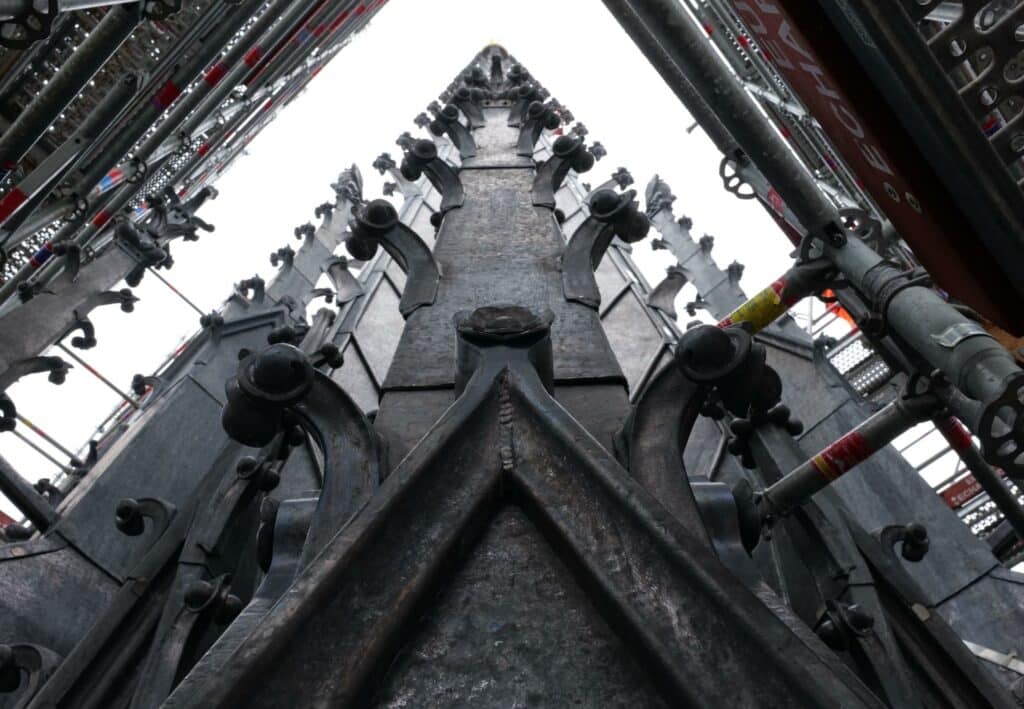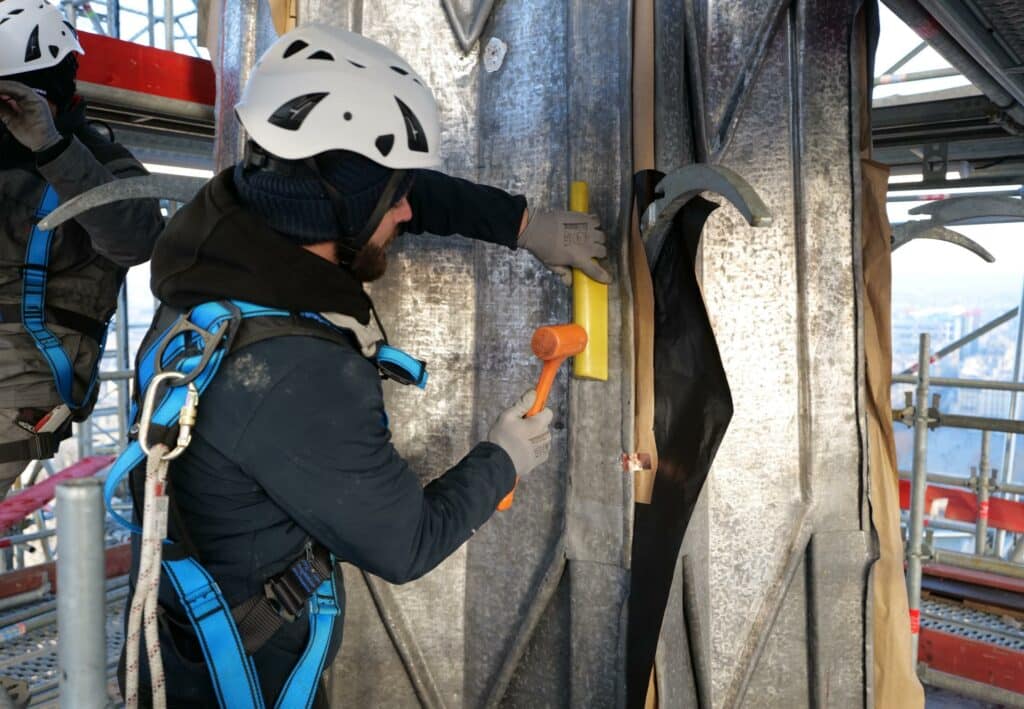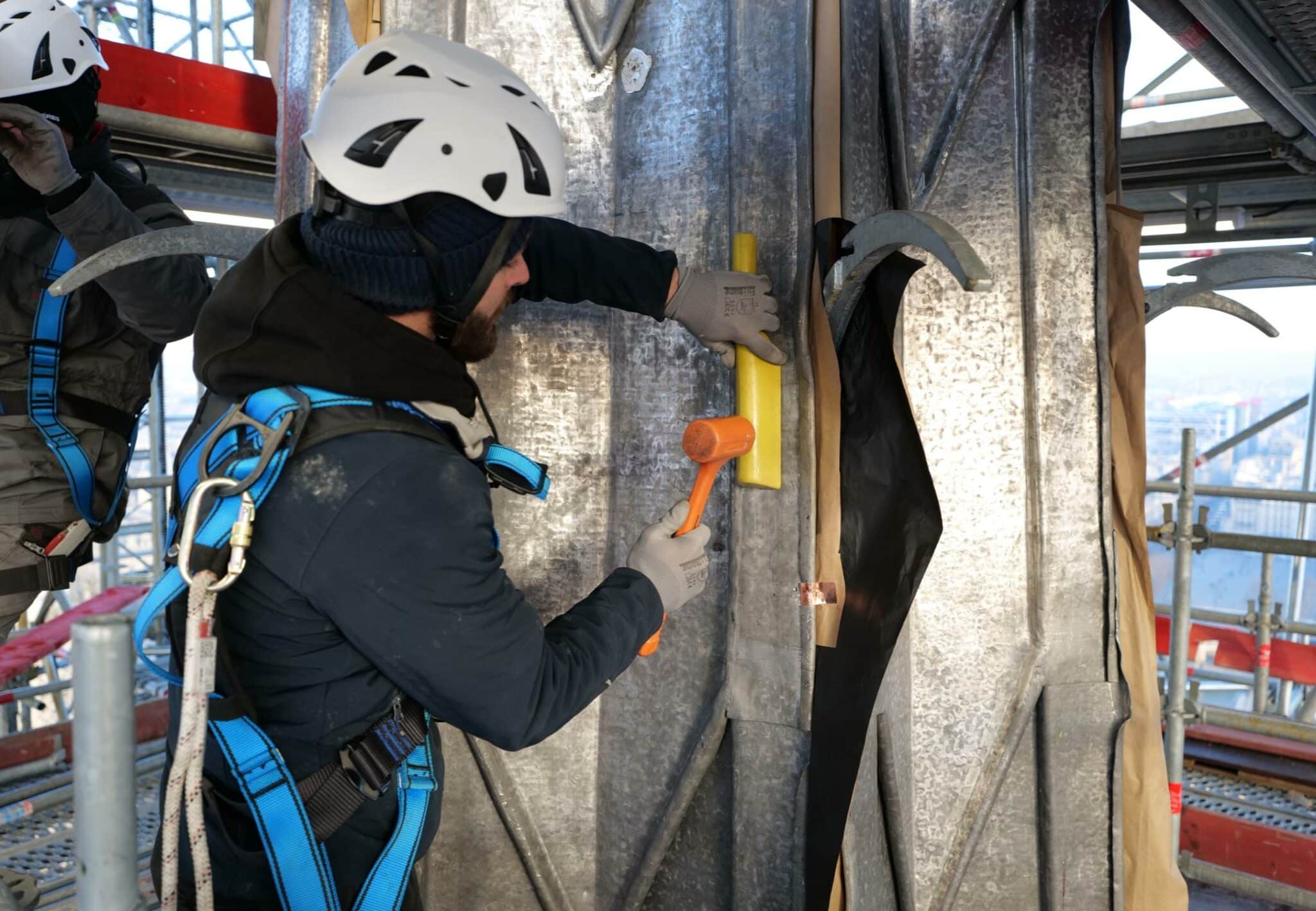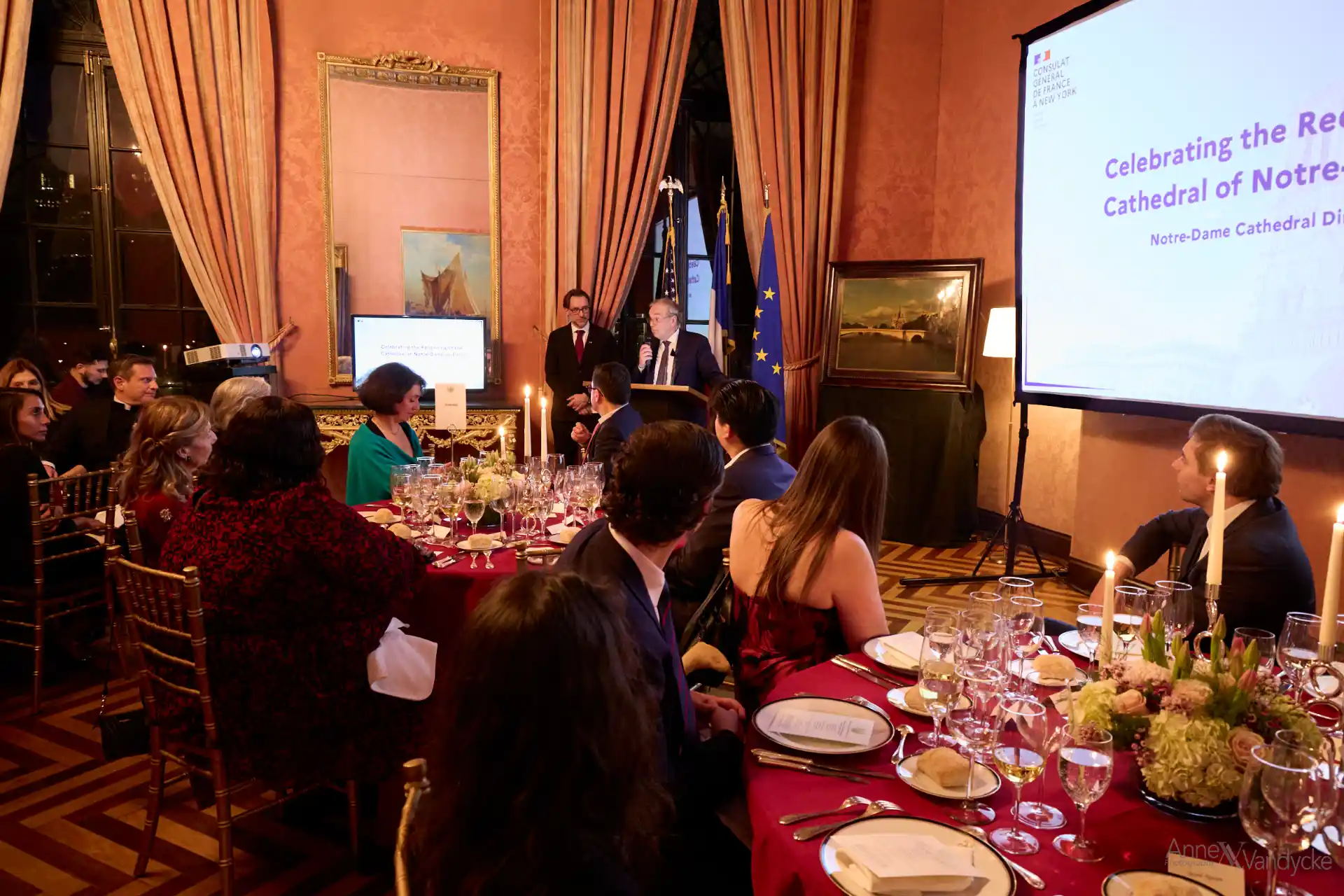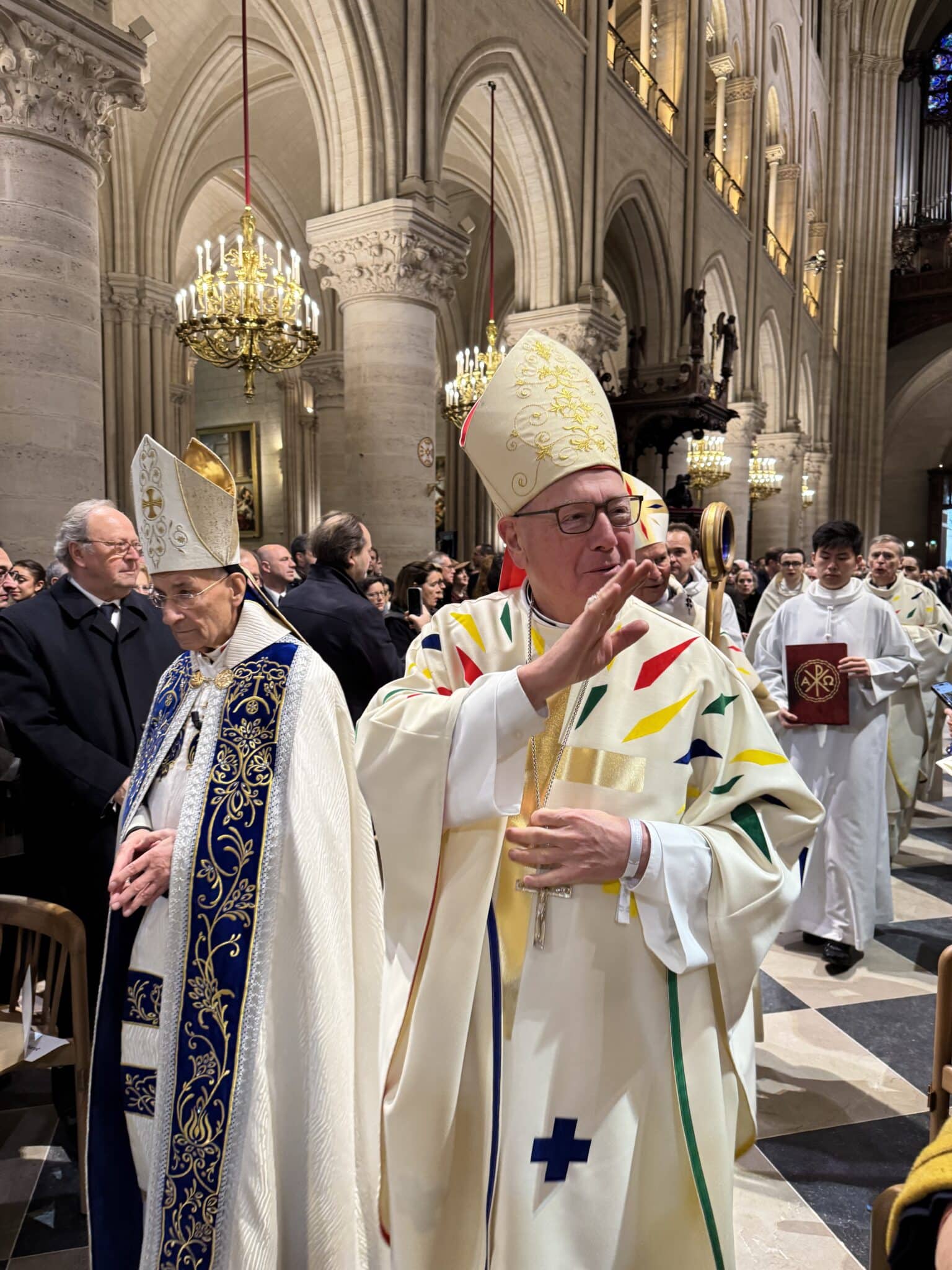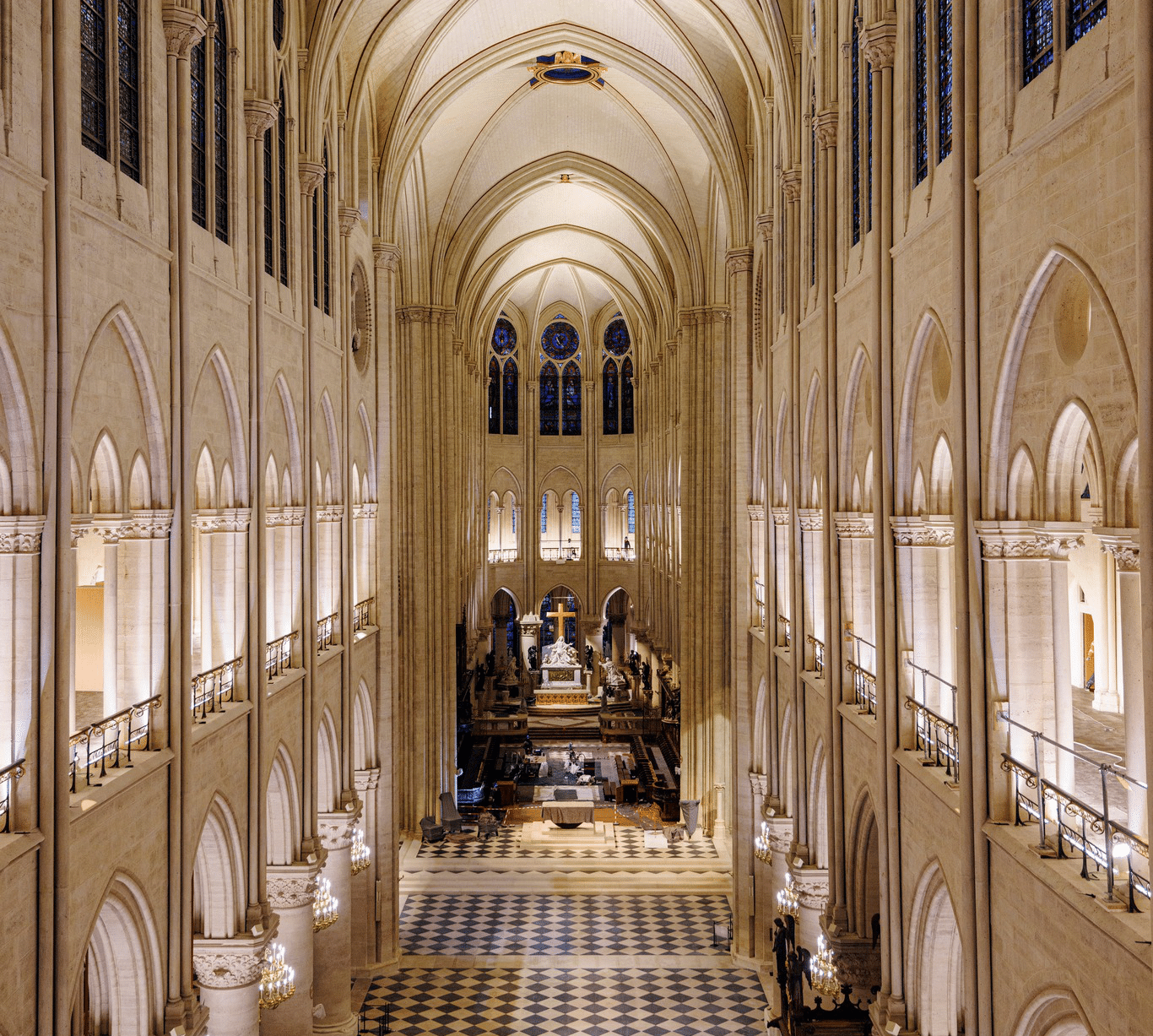After the carpenters completed the reconstruction of Notre Dame Cathedral‘s spire’s framework at the end of 2023, the roofers took over. The wooden spire is now covered with a thin layer of lead to ensure its long-term protection, and has been fitted with numerous ornaments designed by Viollet-le-Duc, giving it its unique grace and originality.
Preparing the Lead Work
Unlike the days of Viollet-le-Duc, when lead was shaped on site, the roofers prepared their work in the workshop. This allowed them to work in favorable conditions, with more space at their disposal and free from the vagaries of the weather.
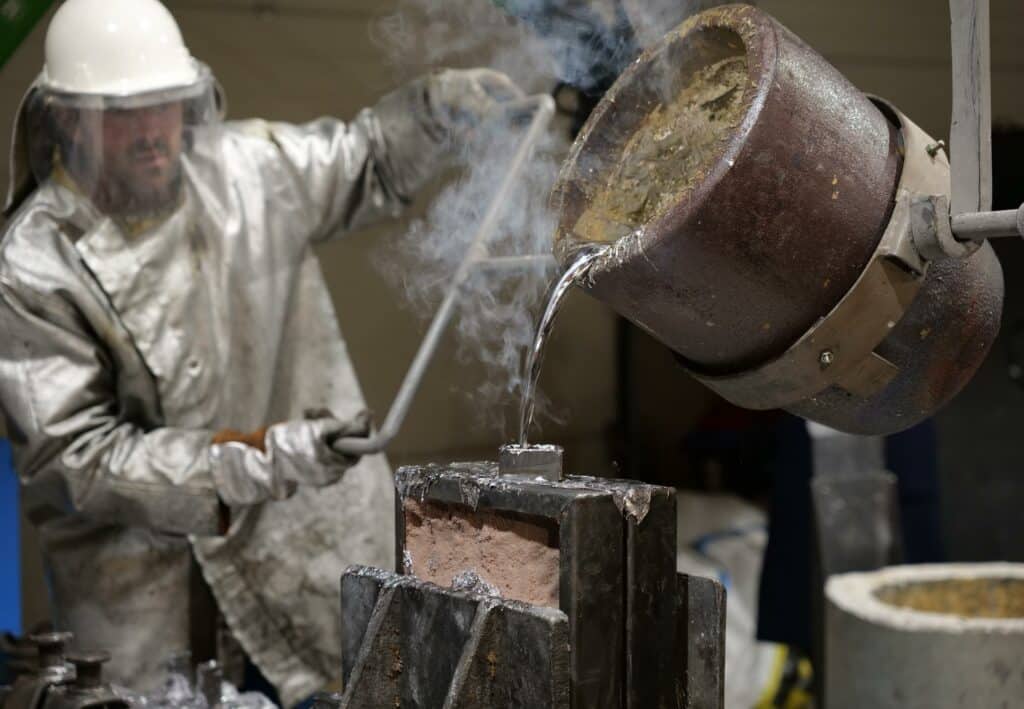
The Intricacies of Lead Roofing
Shaping the roofing and molding the ornaments is a truly artistic task requiring highly specialized know-how, a rare and precious skill acquired by journeymen roofers and ornamentalists over a decade of practice. Ornaments are shaped or, more often, molded. As for the lead tables, they are pre-formed using 1:1 scale fir templates from the frameworks they cover.
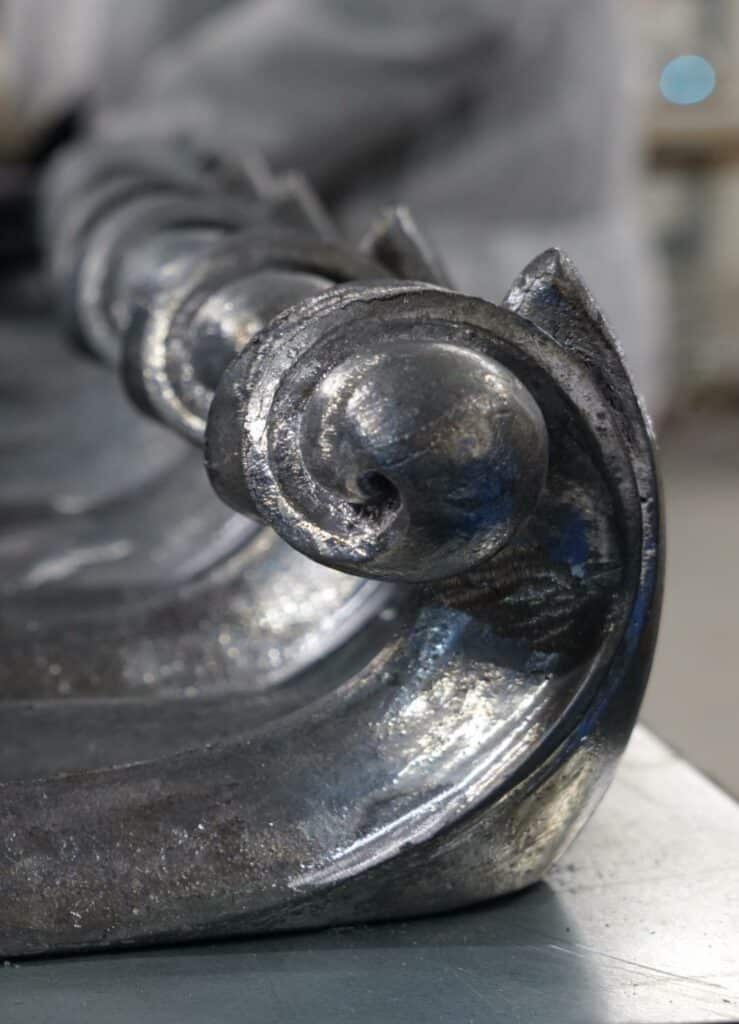
Installation and Finishing Touches
After being molded and pre-fabricated in the workshop, the lead elements are carefully packaged for transport to the site, and then craned as close as possible to the framework. Before laying out the lead tables on the needle, the roofers first cover the framework with dry oak planks: the voliges. They then add a layer of waterproof paper, known as English paper, to separate the wood from the lead boards. The roofers lay the tables one on top of the other, starting from the bottom, with a slight overlap to insulate the framework, and fasten them to the battens. Finally, the molded lead ornaments, known as hooks, which decorate the needle are positioned on the metal supports. There are 192 in all.
